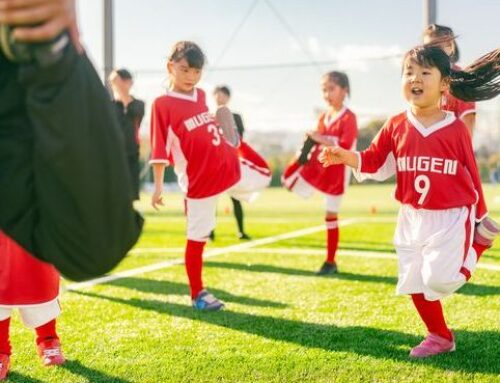Get our exclusive report. Download the iSport360 Club Switching Report Here – For Club Admins, Rec Leaders and Coaches.
How to Add Pressure During Practice
Pressure is an inherent part of sports, and learning to handle it effectively is crucial for young athletes. By incorporating pressure into practice, coaches can help athletes develop the mental toughness and resilience needed to perform under challenging conditions. Here are several strategies to add pressure during practice for youth sports, enhancing their ability to thrive in competitive environments.
1. Simulate Game Scenarios
One of the most effective ways to introduce pressure is to recreate game-like situations during practice. This can include:
- Time Constraints: Implement drills with strict time limits to mimic the urgency of real-game situations. For example, set a timer for a shooting drill in basketball, challenging players to make a certain number of shots within a set period.
- Score-Based Drills: Create practice scenarios where athletes must score or defend points under specific conditions. This could involve practicing penalty kicks in soccer or free throws in basketball with the stipulation that a miss results in a penalty.
- Game-Like Scrimmages: Organize scrimmages that closely resemble actual games, complete with referees, scorekeeping, and spectators when possible. This helps athletes get accustomed to the pressures of a live game.
2. Use Competitive Drills
Introducing competition within practice drills is a great way to simulate pressure. Consider the following:
- Head-to-Head Challenges: Pair athletes against each other in drills, creating one-on-one competitions. This encourages them to perform under the pressure of direct competition.
- Team Competitions: Divide the team into smaller groups and have them compete against each other in various drills. Keeping track of scores and offering small rewards for the winning team can increase the stakes.
- Performance-Based Rewards: Incorporate rewards or consequences based on performance in drills. For example, the team that completes a drill fastest might get to skip the next conditioning exercise.
3. Introduce Mental Challenges
Mental resilience is key to handling pressure. Incorporate mental challenges into practice to build this aspect of athletes’ games:
- Pressure Talks: During high-stakes drills, coaches can add pressure by giving instructions or feedback loudly, simulating the distractions athletes face during a game.
- Visualization Exercises: Before drills or scrimmages, have athletes visualize high-pressure situations and their responses. This mental practice can help them stay focused and composed during actual pressure moments.
- Mindfulness and Relaxation Techniques: Teach athletes breathing exercises and relaxation techniques to manage stress and pressure. Practicing these techniques during breaks in practice can help them remain calm and focused.
4. Create High-Stress Situations
Creating controlled high-stress situations can prepare athletes for the intensity of competition:
- Simulate Noise and Distractions: Use noise, such as loud music or crowd sounds, during drills to simulate the distractions of a live game environment.
- Consequence-Based Drills: Implement drills where mistakes have immediate consequences, such as starting a drill over or doing additional conditioning. This adds pressure to perform correctly the first time.
- Fatigue Drills: Conduct drills that push athletes to their physical limits, then challenge them to perform specific skills. This mimics the pressure of performing well despite fatigue during actual games.
5. Focus on Individual Accountability
Encourage athletes to take personal responsibility for their performance:
- Individual Goals and Feedback: Set specific performance goals for each athlete and provide immediate feedback during drills. Knowing they are being individually assessed can add pressure to perform well.
- Rotating Leadership Roles: Give athletes opportunities to lead drills or practice sessions. This responsibility can create pressure to perform well and manage their peers effectively.
- Public Recognition: Acknowledge individual achievements and areas for improvement in front of the team. This public recognition can motivate athletes to perform under pressure.
Wrapping Up
Adding pressure during practice prepares youth athletes to handle the challenges they will face in competition. By simulating game scenarios, using competitive drills, introducing mental challenges, creating high-stress situations, and focusing on individual accountability, coaches can help young athletes develop the skills and confidence needed to thrive under pressure. Implementing these strategies will not only improve performance but also foster resilience and mental toughness, essential traits for success in sports and life.
iSport360 is the only app that does it all for youth sports. For more information on what we do, click here.
About the author:
Amy Masters is a sports mom, coach, and club administrator. She has been coaching youth sports for more than 10 years. She started Jr Lions Field Hockey, the youth recreation program for the Hunterdon County community growing it from 40 players in year 1 to 150 players by year 3. A few years later, she saw the love and competitiveness grow then started Omega Field Hockey Club serving NJ and PA players. Before coaching, she was a collegiate field hockey player for Lock Haven University. In her spare time (lol), she is head of marketing for iSport360 and the co-editor of the Youth Sports Survival Guide. The Youth Sports Survival Guide is the largest youth sports newsletter in the world.
Learn more or request a demo of our youth sports software that is helping teams improve communication, organization and player development.
August 13, 2024





